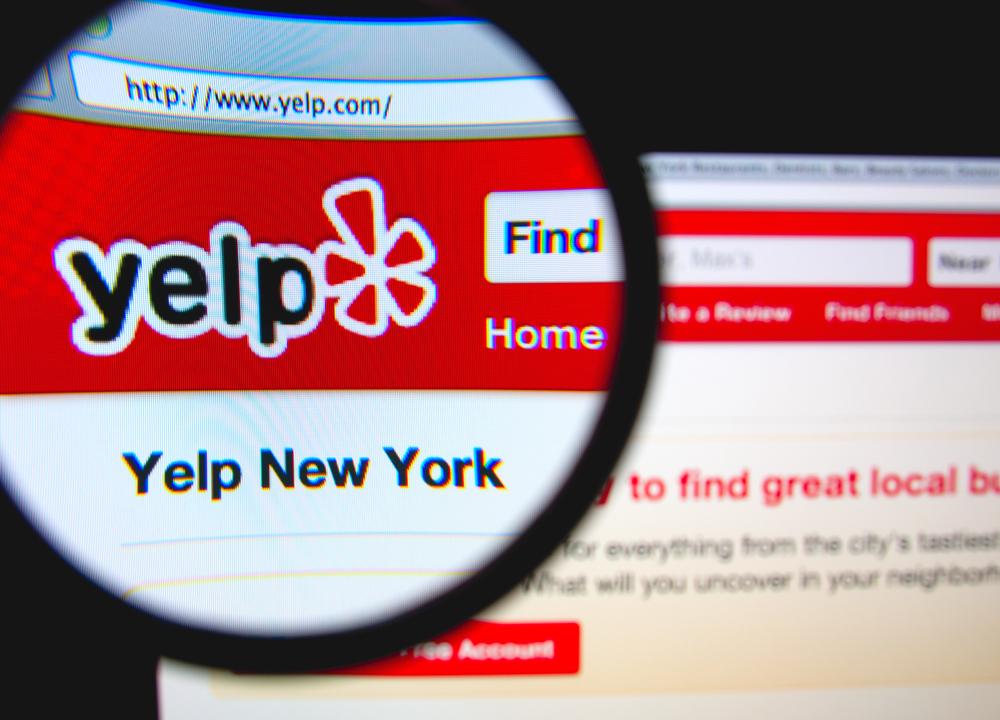Business News Daily provides resources, advice and product reviews to drive business growth. Our mission is to equip business owners with the knowledge and confidence to make informed decisions. As part of that, we recommend products and services for their success.
We collaborate with business-to-business vendors, connecting them with potential buyers. In some cases, we earn commissions when sales are made through our referrals. These financial relationships support our content but do not dictate our recommendations. Our editorial team independently evaluates products based on thousands of hours of research. We are committed to providing trustworthy advice for businesses. Learn more about our full process and see who our partners are here.
15 LinkedIn Marketing Hacks to Grow Your Business
LinkedIn is great for networking, connecting with customers and nurturing relationships.

Table of Contents
LinkedIn can be invaluable to your digital marketing strategy, helping generate leads and boost brand awareness. Unlike Facebook, Twitter and Instagram, LinkedIn is a professional platform designed to help you establish and reinforce business relationships.
We’ll explore LinkedIn’s marketing value and share 15 LinkedIn marketing hacks to help you find new customers and partners to grow your business.
What is LinkedIn marketing?
Many people use LinkedIn personally and professionally to grow their networks and enhance their careers. However, LinkedIn is also an excellent tool for growing your business. The platform exposes you and your company to millions of connections, helping you build relationships with individuals and other businesses to boost your brand.
At its core, LinkedIn is a professional social network focused on career development, professional connections, industry discussions and other business-related activities. You can find customers, employees and partners on LinkedIn.
How to set up your LinkedIn business page
A LinkedIn business page is just as crucial as a company website. You can build a LinkedIn business page for free if you have a company name and email address.
Here’s how to create a LinkedIn business page:
- Visit LinkedIn’s page creation page and select Company. (You can also create a Showcase page or a page for an educational institution.)

- Enter your company details. You can also upload a company logo.

- After entering your information, check the verification box to confirm that you’re authorized to act on behalf of the organization.
- Select Create page. Note that you can have two LinkedIn company pages. After creating your page, you can customize it further and start making connections.
LinkedIn marketing tips to grow your business
We contacted business leaders and expert marketers to learn the best ways to use LinkedIn marketing to grow your business. Here’s what they had to say.
1. Find highly targeted customers and connections on LinkedIn.
“The targeting on LinkedIn is unparalleled in the realm of digital advertising. Small businesses can zero in on the exact industry, company size and job role [of the people] that they know typically would buy their product or service. For example, if you are selling customer support software to small businesses in the United States, you can set your advertising campaigns to only be showing to businesses [that have] under 100 employees, based in America – and within that grouping, only to executives at those companies with a customer support title.” – Tim Peters, Global Demand Generation and Marketing Leader at Enghouse Systems Limited
2. Use LinkedIn to stay on customers’ radars.
“My company helps small businesses generate leads on LinkedIn. Clients tell us what kind of people make high-quality customers for them. We search on LinkedIn for people who fit their criteria and then introduce them. (We do it so it looks like the client is introducing themselves, but we do all the work for them.) Then we stay in touch with the people who have expressed interest, again using LinkedIn. We do daily status updates and weekly LinkedIn blog posts to keep the client’s name in front of their network. We also send monthly emails that share information about the kinds of problems our clients can solve for their customers and share the results they have achieved for other customers. We also make offers, such as inviting people to a webinar or offering a white paper. The result is a simple, inexpensive, systematic process for doing lead generation, with all the work done through LinkedIn.” – Judy Schramm, CEO of ProResource Inc.
3. Grow your email marketing list using LinkedIn.
“I highly recommend everyone on LinkedIn write a letter [to each connection] saying thank you for being connected on LinkedIn, and invite them to be part of your email marketing list. Do apologize for the lack of personalization in the email. LinkedIn lets you message 50 people at a time this way. I added about 300 people to my email list with this method. Include in your email a direct link for the email signup. It is imperative that you have reciprocity in the message: Tell them what they will receive by signing up for the email list, and offer to look at something of theirs, which is a fairly noncommittal method to garner goodwill.” – Bradford Hines, founder of YumDomains.com and HungryKids.org
4. Use LinkedIn’s sponsored updates.
“With sponsored updates, businesses pay to push their post onto an individual’s LinkedIn feed. This ‘pay-per-click’ or ‘pay-per-1,000’ impression feature offers demographics similar to other social platforms (location, gender and age), but one key differentiation is the ability to customize based on company name, job title, job function, skills, schools and groups. Users can target interested industries without competing against the noise of irrelevant companies and messages. A sponsored update can be an excellent way to promote thought leadership content [that is] useful primarily to the targeted audience with a strong call to action. People don’t want to see pure advertising anymore and want something useful for free. By promoting a firm’s content (whitepaper, guide, etc.) through a LinkedIn Sponsored Update, a firm can target a niche audience, increase website visitors and, if the content is compelling enough, generate sales leads.” – Jeremy Durant, business principal at Bop Design
5. Post high-quality content on LinkedIn.
“Good content can be highly targeted and should accomplish two goals. First, it should teach others how to solve a problem or how to do their job better, and it then establishes you as a thought leader in that space. Each aspect naturally leads to more business if you offer them real value. It’s basic psychology, and it gets real results.” – Michael Riley, co-founder of Boxter
6. … and go viral.
“Posting directly on LinkedIn is the most powerful tool available on LinkedIn today. If a post begins to gain some momentum, LinkedIn will put a spotlight behind it in one of their categories, and it can get tens of thousands of readers (or more). This is a great way to improve your visibility while reaching readers in a way that would not have been possible on your own website or blog or even [by] posting an article link on LinkedIn.” – Lavie Margolin, author of The LinkedIn Butterfly Effect
7. Give a face to your employees on LinkedIn.
“Get as many of your employees as possible to create and complete their profiles on LinkedIn. These should include appropriate photos, relevant job history that includes a description of how they help your business, and professional connections. My current company is putting together a LinkedIn Day, when we’ll have a photographer available to take profile photos and we’ll help employees set up their accounts.” – Tam Frager, marketing and communications consultant
8. Join LinkedIn groups – and stay active.
“One tip I always share for small business owners is to join LinkedIn groups that are relevant to their target demographic. Not only is this a great way to ‘listen in’ on what your audience is talking about, [but] there may [also] be times for small business owners to interact or offer their advice. More importantly, you can message the members of groups you are in, even if you aren’t connected. LinkedIn InMail adds up quickly, so this is a great way to save money when building relationships with potential clients.” – Lauren Covello, senior manager at External Communications at Workiva
9. … and create your own LinkedIn group.
“Here’s a secret sauce to find your ideal, ready-to-buy prospects right away on LinkedIn: Create your own LinkedIn group. After you have your LinkedIn group set up, go out and join as many groups as you can (LinkedIn allows you to be in 50 total) where your prospects are hanging out. The next step is to pick one of those new groups you’ve joined and start working the Members page to find prospects. Once you’re inside the group and approved as a member, click on Members, then filter the list of members further by searching for certain job titles or something else to winnow down the list to your ideal prospects, and then invite them to join your group (tip: send personalized invitations). Once these invitees join your LinkedIn group, you have all your proverbial fish in the same barrel – all your best prospects in one place! You can control this LinkedIn group so that no competitors get in, and you can share great, valuable content within the group that your prospects will love. You also get to demonstrate your value and expertise for them while avoiding overt sales pitches or spam. Plus, you also have a built-in email list, a focus group of your core prospects and clients, and so on. This is a great tactic to build your brand and generate leads to boost your small business.” – Ali Liaqat, marketing automation manager at Fonterra
10. Make your LinkedIn company page matter.
“It’s also important to have an updated and consistent presence for your brand with its own company profile page. Imagery, colors and content on this page should be consistent with your website and any other social media profiles the business has. The page should be updated regularly so the brand is active and appears to be a current business. We’ve all had the experience of stumbling upon a company social media profile that’s updated once a month or, worse, hasn’t been updated in months. Creating a LinkedIn presence, then not maintaining it, will be worse than not having one at all.” – Carrie Booher, digital content editor at WWOZ 90.7 FM
11. Claim your custom URL on LinkedIn.
“Everyone should claim their custom URL to ensure it includes their name. This is especially important for people who have a lot of contact with potential clients – especially for those who [are in] professional services and the B2B sector – because when meeting with someone they have not yet met, many people will search Google for the name of the person with whom they’re meeting to learn more about them. Claiming your custom URL makes it more likely your LinkedIn profile will rank at the top of those search results.” – David Erickson, principal at e-Strategy Media
12. Complete the summary section on your LinkedIn profile.
“The summary section is the most overlooked. You have 2,000 characters to speak to your target audience, directly and persuasively. Use complete sentences, write in first person, and address their pain points clearly and succinctly. Many people prefer to go to LinkedIn [over] a website. Most of the time, people want to connect with the person before the product or service, and this is your opportunity to introduce yourself to prospective clients and customers. Also, include your contact information at the end of the summary section. Even though it’s elsewhere on your profile, make it easy for people to reach you.” – Susan Tabor-Kleiman, consultant, speaker and owner of Your Professional Writer
13. Think of LinkedIn marketing as a numbers game.
“I have learned that LinkedIn marketing is more science, less art. In other words, it’s a numbers game. I know that each Wednesday, I’ll touch at least 2,000 C-level executives. These touches will lead to about six responses, and two of those six will become clients. Instead of attending trade conferences, exhibiting and speaking at a cost of approximately $10,000 per conference, I have built my own practice for less than $1,000 a year for marketing, $250 of which goes to LinkedIn for a Premium account. I can afford a few hours each week of my time more than I want to swallow the $40,000-per-year pill that I know most of my colleagues spend, attending an average of four conferences each year.” – Greg Taylor, owner of Telecom Law Attorney
14. Avoid hard sells on LinkedIn.
“Treat LinkedIn like any other form of marketing that you do, and get clued [in] on the latest trends. People don’t want to be interrupted, so try your best to be ‘discovered’ on LinkedIn. Read up on content marketing and inbound marketing, and apply these strategies to this network. There are plenty of people acting like hard-sell 1980s sales reps on LinkedIn, so be wise and don’t become one of them.” – Nikki Hammett, content marketing specialist, Altair
15. Start with connections, then build relationships on LinkedIn.
“Understand that LinkedIn is a social network for professionals to connect with other professionals. A business owner can and should connect with prospects, strategic partners, referral partners and other business owners. And once those connections are made, the business owner can decide how to nurture specific connections to grow the relationship.” – Charlene Burke, CEO of Search by Burke
Importance of a LinkedIn marketing strategy
LinkedIn is less about selling or marketing your products and services than other social platforms. On LinkedIn, the obvious hard sell is less successful and can even be off-putting. A marketing strategy specific to the platform is crucial. Because the network consists of a totally different audience, LinkedIn marketing requires a different approach to get the results you want.
To ensure you’re getting the most out of your LinkedIn presence, consider the audience thoughtfully and speak directly to them, using readily available demographics and business roles to direct your message to your best target. Then solve their biggest problems, ease their most significant pain points and offer insights that help them do their jobs better.
LinkedIn for the results
If you’re not yet using LinkedIn, the time has come. Examine your current marketing plan and determine where LinkedIn can add value. Then create a specific plan that leverages the power of a platform where users are already in a work mindset. Engage authentically and purposefully with contacts and customers, and compare your results to marketing efforts on other social media platforms.
LinkedIn says it’s the leading platform for lead generation. According to Sprout Social, 82 percent of B2B marketers see their best return with LinkedIn compared to other social platforms. Surveyed B2B marketers also said LinkedIn accounts for 80 percent of their social media leads. Used appropriately, LinkedIn is a powerful marketing tool that can take your business to the next level.
Jessica Pooree contributed to this article. Source interviews were conducted for a previous version of this article.















